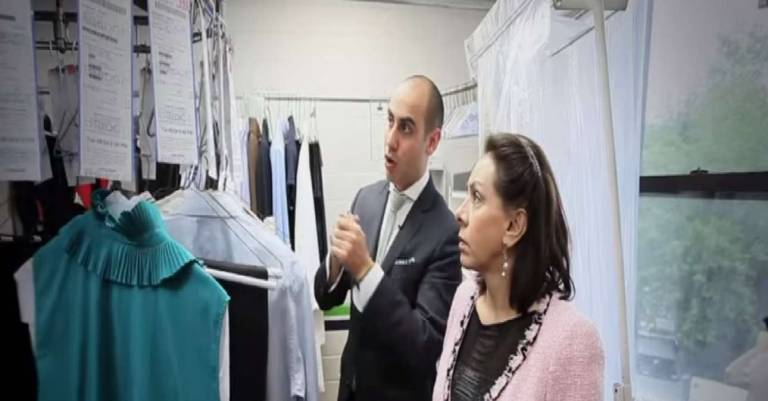Welcoming older workers Age Smart Employer Awards

Bridge Cleaners and Tailors is owned by Victoria Aviles, a Colombian immigrant in her 60s, who worked her way up from sweeping in a dry cleaners to becoming a couture tailor and business owner. She is now joined by her 29-year-old son Richard.
“Every tailor here comes from a different country. Many of them have been offered to make more somewhere else, but they stay because they feel at home here,” Richard said. “We’re running less of a business and more of a family. Everyday for lunch, someone cooks a large dish and they all share it for lunch. When one tailor’s house burnt down, everyone chipped in, clothes, food and money.”
The business, with stores in SoHo and Brooklyn, highly values its older workers, particularly its 15 tailors, who are all in their 60s and 70s, as there is a shortage of tailors citywide. They do not have a clear plan for how to replace these tailors if they decide to leave.
“There are skills not found or taught here in the U.S.,” said Richard. “Even at FIT, they are not teaching proper sewing techniques. It is more of an art. And then computers have also taken over. For example, if the business is looking for a seamstress and a pattern maker, someone from FIT might know how to make a pattern, but then can’t cut it. You can design suits, but you can’t tailor them.”
Richard says that tailors working by hand are still the only way to custom tailor clothing.
“A machine for the foreseeable future will not be able to remove certain stains or alter a garment to a person’s preferences,” he said.
“I don’t know what we’ll do,” he said. “Thankfully there are still people out there in other countries who know how to do this work.”
Richard says that he values older workers for a list of reasons, in addition to needing them for their skills.
“I find that older workers take the job more seriously. People who have endured pain in the past feel they have to prove themselves and get validation from their job,” he said.
He also said that older workers also see the whole – the context of their work – because of their experience, instead of just the one piece they are working on.
The business also tries to make the work place as comfortable as possible for all workers, who often work long hours. When one worker asks for a change to their work station – like fatigue mats or more comfortable chairs – they buy it for everyone. They have also moved clothing closer to people’s stations and structure the space so they do not have to go up and down the stairs.
While his mother has an iPhone that she does not turn on, Richard brings technological expertise and a desire to streamline their process.
“We used to have post-its all over. It was the way we assigned tasks to everyone, to each other. They were everywhere. It was the worst thing ever. So I got everyone email addresses, we all got an app, and we now have a task management system. It’s not a choice.”
He says it is important to bring everyone along with the technology, so they don’t get left behind.
“If you do not change with the times, you’ll get swallowed up,” he said. “Companies and people become irrelevant. Those types of businesses are disrupted by smaller, leaner, lighter start ups.”
Do you know a business that thrives with the help of its older workers -- do you run one? Apply for a 2015 Age Smart Employer Award.
This award, in its second year, recognizes New York City businesses and nonprofits that organizations that have policies and practices that help to hire, retain, and engage four generations of workers. The awards are an initiative of the Robert N. Butler Columbia Aging Center and The New York Academy of Medicine, funded by the Alfred P. Sloan Foundation. For more information about the awards and the application process, visit www.agesmartemployer.org